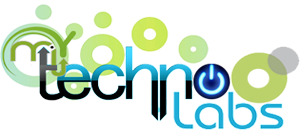In addition to a full lineup of measurement and automation hardware and test and monitoring platforms, National Instruments offers the LabVIEW software platform. LabVIEW, which stands for Laboratory Virtual Instrumentation Engineering Workbench, is designed for science and engineering professionals working in the areas of data acquisition, instrument control and industrial automation. In a broad sense, the functions of this platform strive to increase productivity and reduce time to market for developers.
Basic Functions
As a graphical programming environment, LabVIEW allows scientists and engineers to create, measure, test and control applications. Like the platform itself, these applications are fully scalable. LabVIEW functions via a graphic interface – including optional drag-and-drop graphical programming – comprised of icons and flowchart-like wires. The platform helps reduce testing time by synchronizing multiple measurements and analysis in a unified format. LabVIEW functions on Windows, Linux and Mac operating systems.
Specific Functions
LabVIEW's built-in library of instrument drivers allows it to connect to thousands of different instruments and sensors, as does its integration with plug-and-play USB, PCI, Wi-Fi and Ethernet devices. The platform's native analysis and signal processing functions permit it to analyze engineering instruments via frequency analysis, curve fitting and other measurements. LabVIEW's automatic multi-threading allows the platform to handle large data sets, while its execution-highlighting function optimizes code for parallel execution with integrated debugging and visualization tools.
Features
The LabVIEW platform can reuse existing code as well as code from resource libraries, and it supports customized user interfaces. File sharing and collaboration features support interaction with an online community of more than 110,000 active LabVIEW users. National Instruments offers maintenance and support services, including software upgrades, on-demand training resources and modules, as well as direct access to technical support from software engineers.
Basic Functions
As a graphical programming environment, LabVIEW allows scientists and engineers to create, measure, test and control applications. Like the platform itself, these applications are fully scalable. LabVIEW functions via a graphic interface – including optional drag-and-drop graphical programming – comprised of icons and flowchart-like wires. The platform helps reduce testing time by synchronizing multiple measurements and analysis in a unified format. LabVIEW functions on Windows, Linux and Mac operating systems.
Specific Functions
LabVIEW's built-in library of instrument drivers allows it to connect to thousands of different instruments and sensors, as does its integration with plug-and-play USB, PCI, Wi-Fi and Ethernet devices. The platform's native analysis and signal processing functions permit it to analyze engineering instruments via frequency analysis, curve fitting and other measurements. LabVIEW's automatic multi-threading allows the platform to handle large data sets, while its execution-highlighting function optimizes code for parallel execution with integrated debugging and visualization tools.
Features
The LabVIEW platform can reuse existing code as well as code from resource libraries, and it supports customized user interfaces. File sharing and collaboration features support interaction with an online community of more than 110,000 active LabVIEW users. National Instruments offers maintenance and support services, including software upgrades, on-demand training resources and modules, as well as direct access to technical support from software engineers.
VariationsLabVIEW is offered in three different versions as of February 2012. Each performs the same basic function but differs in the details. LabVIEW Basic caters to hardware input-output integration and the development of graphical user interfaces. LabVIEW Full adds more than 850 analysis and math functions, plus event-driven programming, to the platform. LabVIEW Professional allows users to deploy applications via program-distribution and source code controls. All versions of LabVIEW perform the basic functions of reading, writing and sharing data.

No comments:
Post a Comment